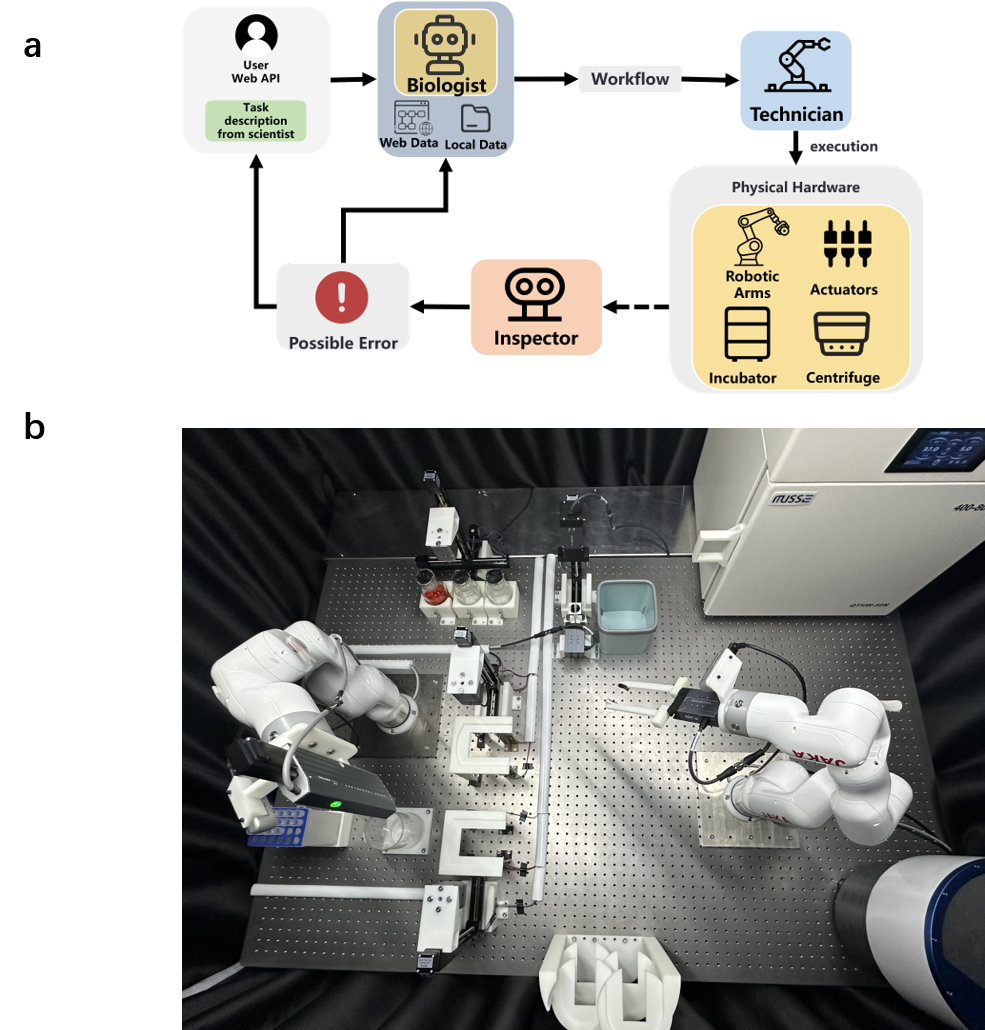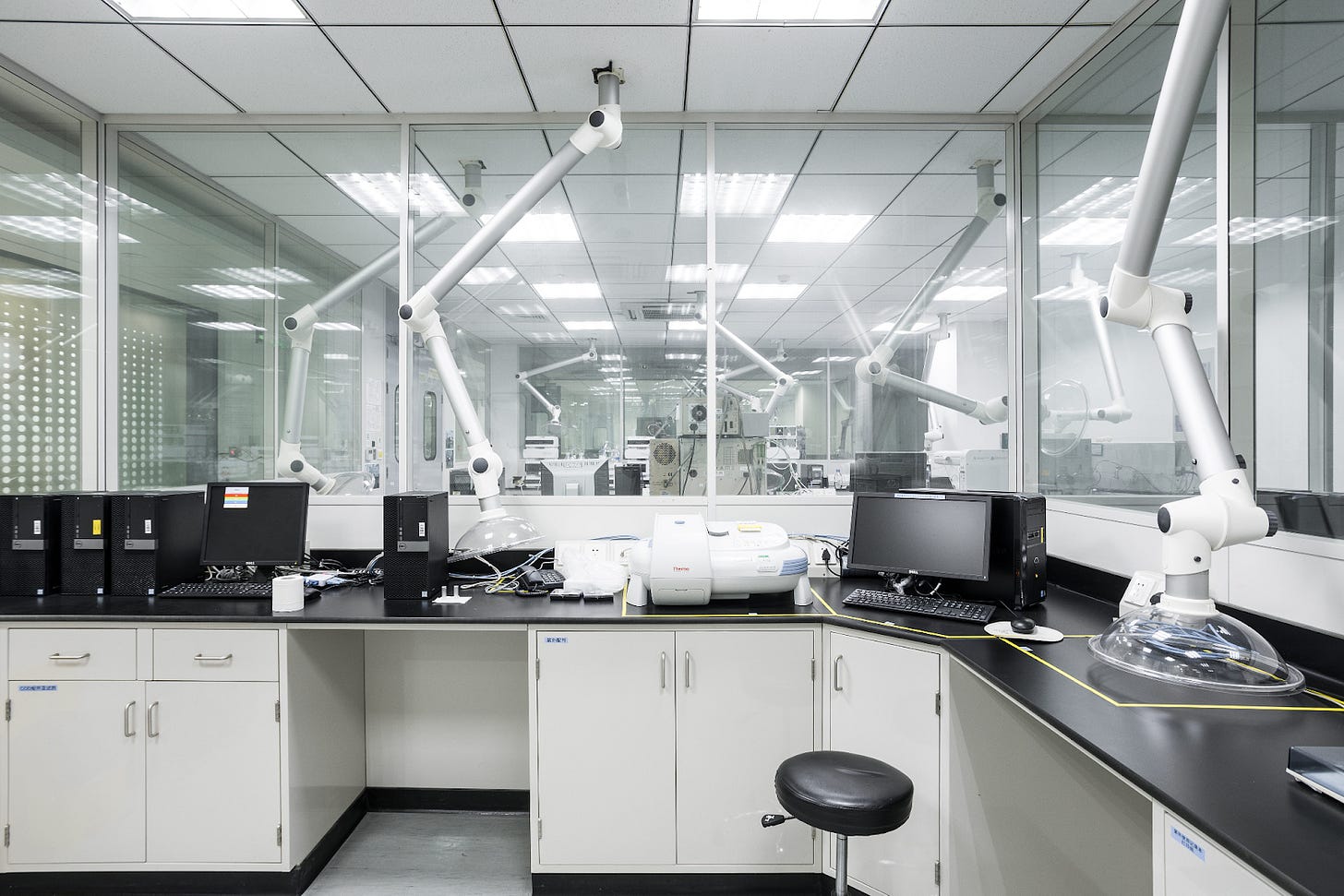Welcome to Decoding Bio: each week our writing collective highlight notable news—from the latest scientific papers to the latest funding rounds—and everything in between. All in one place.
If you’d like to publish your own piece, email us here!
About the author: Cam is a deep tech strategist focused on commercialising technologies at the intersection of biotechnology, materials, AI, and robotics. After leading strategy at two UK–US biotech startups, he recently moved to Shanghai to join XJTLU’s deep tech entrepreneurship campus, where he drives engineering biology innovation and commercialisation initiatives while mentoring and investing in startups through its venture studio incubator.
I know I’m not the only lapsed lab scientist that has thrown down their pipettes in frustration at another failed experiment where I’m pretty sure I’m the problem. Biology has always been constrained by its complexity: too many variables, too many unknowns, too slow to experiment. Rapid advances in AI and automation mean we are hopefully converging on the solution to this age old frustration and, from where I am sitting, it seems China might just have the edge.
In a Suzhou lab, a robotic arm gently tilts a culture flask, its movements directed not by a technician but by an AI agent. Nearby, a vision-guided manipulator adjusts microfluidic flows, while a machine-learning model runs in the background, predicting the optimal conditions for cell growth. What makes this scene remarkable is not just the automation, but the loop it creates: AI models generate hypotheses, robotic systems test them in real time and new data flows back to improve the algorithms.
This is the essence of embodied AI in biology; systems where intelligence is fused with physical infrastructure, allowing predictions to be validated in the wet lab rather than just simulated in silico. China, with its state-backed investments, emerging robotics players and rapidly scaling biomanufacturing facilities, may be positioning itself to lead this new paradigm.
Over the past year, I’ve seen a flood of coverage portraying the tech race between China and the West as a zero-sum competition. As a scientist-turned-startup strategist who recently relocated to China to see what all the fuss is about, I wanted to share some of the insights I’m gaining from being on the ground here.
From Software-First to Embodied AI
In the early 2010s, companies like Atomwise helped define the first wave of AI in drug discovery. Their platform, AtomNet, used deep learning to predict how small molecules might bind to protein targets, dramatically narrowing the chemical search space. For the first time, AI could point us toward the most promising compounds without the need for exhaustive wet-lab screening.
The next major leap came from DeepMind’s AlphaFold, which in 2020 cracked the decades-old “protein folding problem” by predicting 3D protein structures directly from amino acid sequences. Suddenly, biology’s hidden architecture was visible on a computer screen, with a level of accuracy that rivaled lab-based methods.
Yet both Atomwise and AlphaFold shared the same limitation: they operated purely in silico. These systems could make astonishing predictions but they could not test them. Human scientists still had to move ideas into the lab, validate them experimentally and generate new data.
Why Embodiment Matters
Biology is not a problem you can solve entirely on a screen. Unlike finance, logistics, or software, where AI can operate in the purely digital realm, biological engineering is a multifactorial, experimental science. Designing a new enzyme, cell line or therapeutic isn’t just about making predictions, it’s about testing them in messy, living systems.
Every biological experiment involves dozens of variables, from temperature and pH to nutrient concentrations and gene expression levels, all of which interact in unpredictable ways. AI is powerful because it can track and model these variables at once, uncovering hidden patterns no human could hold in mind. But those insights are only valuable if they can be empirically validated and refined through iteration.
That’s where embodiment comes in. By embedding AI in robotic systems, predictions can be tested in the wet lab immediately, producing new data that cycles back into the AI. This creates a closed loop of hypothesis, experiment and learning; something closer to a directed evolution engine than traditional research. The promise is speed: discoveries that once took months of manual work could unfold in days.
We’re seeing western companies move into this space with platforms like Recursion’s LabGenius’ and BigHat Bio’s though few have achieved full robotic autonomy.
China’s Bet on Embodied AI
China has been quick to recognise that biology requires AI tied directly to physical lab infrastructure. Over the past decade, it has built out an extensive network of biofoundries, automated wet labs and industrial-scale screening facilities, often bankrolled by regional and national government programmes. These efforts weren’t always designed with AI in mind, but they now provide the ideal substrate for embedding agentic AI systems.
A flagship example is BioMARS, a language-driven robotic scientist that coordinates specialised AI roles: a “biologist” for experiment design, a “technician” for robotic execution and an “inspector” for quality control to autonomously run wet-lab protocols. Unlike earlier digital twin approaches, BioMARS directly links natural language instructions to physical experiments, with demonstrations including autonomous cell culture and passaging.

More broadly, many Chinese biotech organisations are moving toward multi-agent AI systems that mirror research lab dynamics. Rather than relying on a single agent, these frameworks distribute tasks across specialised roles for experiment planning, data interpretation and optimisation, all connected to automated instruments.
At the same time, there are signs that elite universities are building BioMARS-like infrastructures, often under government incentives, as part of a strategy to make academia a “pre-incubation” layer for innovation more broadly (notably, these will also be linked to commercial advisory and early stage funding mechanisms). The aim is to derisk foundational technologies and spin out companies from a more advanced starting point.
Thirdly, there seems to be increasing chatter in Chinese circles of organ-on-a-chip and other sensing methods to create a direct bioelectronic interface, essentially closing the DBTL loop and optimising for data-rich phenotypic screening,
Taken together, these developments seem to show a systemic retooling of China’s biotech innovation pipeline.
Why China Is Well Positioned
Several factors make China a particularly fertile ground for embodied AI in biotech:
State-led investment and direction: Unlike in the West, where funding often depends on VC cycles and market hype, China has made biotech and AI national priorities. Government grants and industrial park subsidies lower risk for startups and accelerate the build-out of infrastructure. Biotech and AI are key technologies highlighted in China’s most recent 5-year plan which you can read more about here.
Integration of ecosystems: Cities like Beijing, Shanghai, Suzhou and Shenzhen are building entire biotech campuses that house AI companies, robotics providers, wet labs and manufacturing facilities side by side. This co-location drastically reduces friction between discovery, validation and scaling. A prime example is BioBAY in Suzhou (pictured below) which, at nearly 20 years old, is one of the oldest and most developed of these sites. Focusing on innovative therapeutics, high-end medical devices and diagnostics it now houses more than 500 innovative life science companies covering all aspects of development, commercialisation and investment. The results speak for themselves as BioBAY’s ecosystem has successfully brought 15 therapeutics to market, 54 unicorns and 17 IPOs.

Rapid advances in automation and robotics: Over the past decade, Chinese companies like BYD have pioneered “dark factories” - fully automated, lights-out manufacturing facilities where robots work without human supervision. That expertise in industrial-scale automation now seems to be being redeployed into biotech. The same engineering mindset that enabled precision electronics assembly is mass producing cost effective robotic platforms sensitive enough to pipette microliters of liquid, handle fragile cell cultures and run assays around the clock. This convergence means Chinese labs may be able to operate robotic wet labs that are more advanced, integrated, and cost-effective than many Western equivalents.
The electrostate grid advantage: China’s national electricity grid is stable, standardized, and centrally managed. This matters for embodied AI because robotics-heavy labs are extremely sensitive to fluctuations in power supply. A reliable, unified grid allows large-scale labs to run automated experiments continuously, without the costly interruptions or redundancies that plague more fragmented energy systems in other countries. The importance of this can’t be overstated as US AI experts recently returned stunned from a trip to China remarking that the “US grid is so weak the race may already be over”.
Talent pipelines and returnees: China is producing vast numbers of engineers and life scientists, and is now mandating AI education from the age of six. That means the next generation of biologists may not just be comfortable with computational tools, but could treat AI agents and robotic systems as natural collaborators in science. At the same time, a steady flow of scientists and entrepreneurs trained in the US and Europe are returning to China, drawn by government incentives, faster-moving ecosystems, and the chance to build globally significant companies on home turf.
Biotech’s Internet Moment
The way I see it, embodied AI represents more than just an incremental efficiency gain but a structural shift in how biology is practiced. For decades, biology has been limited by the pace of manual experimentation: researchers design a hypothesis, run an experiment, collect the results and then start again. Each cycle can take weeks or months.
With embodied AI, that cycle collapses. Models generate hypotheses, robotic systems run the experiments and the resulting data flows back in near real time to retrain the models. Prediction, validation and iteration become a single continuous loop. That is what makes this so transformative.
I think of it as biotech’s “internet moment.” Just as the internet rewired the flow of information by lowering barriers to entry, accelerating feedback and enabling entirely new business models, embodied AI rewires the flow of experimentation. It turns biology from a slow, artisanal craft into a scalable, data-driven engineering discipline.
The implications are enormous:
Drug discovery could move from high-stakes bets on a handful of molecules to massively parallel exploration of chemical space.
Biomanufacturing could optimize microbial strains and fermentation conditions at industrial scale with far less human trial-and-error.
Synthetic biology could accelerate cycles of design–build–test–learn to the point where novel enzymes, materials, and therapeutics become routine outputs of an automated pipeline.
And unlike the purely digital revolution of the past two decades, this one would be inseparable from physical infrastructure: labs, robots, sensors, and supply chains. That makes the geography of where this happens especially important.
A Global Shift
AI promises to change the way we do biology, but only if it can move beyond prediction and into action. Embodied AI is the bridge: an intelligence embedded in robotics and automation, able to generate, test and learn from biology in real time.
China seems to be moving faster than almost anyone in building this. Projects like BioMARS show what’s possible when natural language interfaces, robotic labs and integrated data platforms are connected into a seamless loop. Combined with state-led investment, national-scale biofoundries, deep automation capabilities and a rapidly expanding talent base, this positions China as one of the world’s most advanced testbeds for embodied AI in biotech.
Analysts are taking notice. A June 2025 report, concluded that biotechnology is the sector where China is most likely to overtake the U.S., citing the same mix of state-led strategy, regulatory speed and technical talent that is accelerating embodied AI. The U.S. National Security Commission on Emerging Biotechnology warned “There will be a ChatGPT moment for biotechnology, and if China gets there first, no matter how fast we run, we will never catch up.”
The real question to me isn’t whether China takes the lead or not but how the rest of the world is choosing to engage with China. For some, that may mean treating China as a competitor to race against. For others, it may mean collaboration at the level of standards, tools, or supply chains. Either way, embodied AI in biotech will not develop in isolation: China’s scale ensures it will set part of the global agenda. The challenge for Western institutions, companies, and governments is to decide where they want to plug in and on what terms.

Did we miss anything? Would you like to contribute to Decoding Bio by writing a guest post? Drop us a note here or chat with us on Twitter: @decodingbio.



